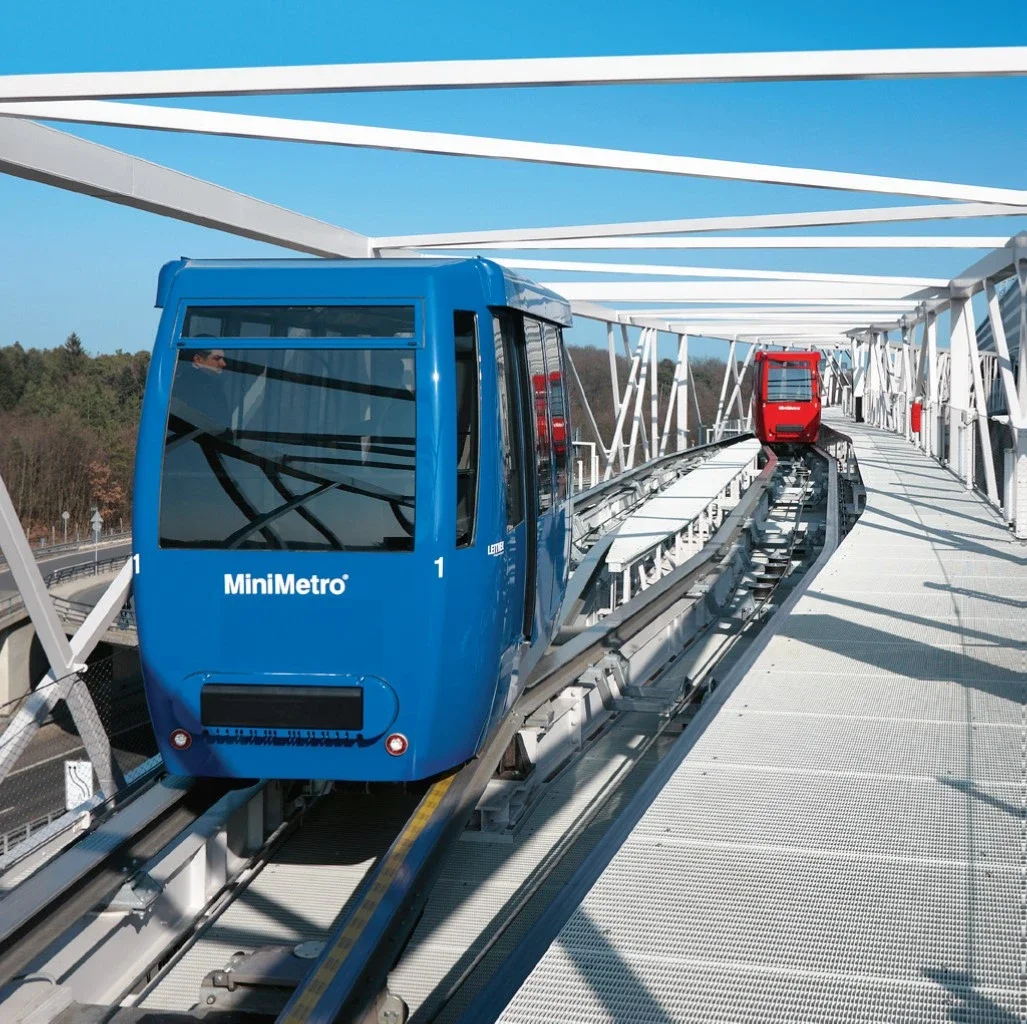Passenger ground transportation is a big issue in large airports, and fast, reliable, convenient and cost-efficient people-mover systems are vital for optimising passenger flow. LEITNER ropeways' Bo Birk Pedersen gives Vito Ianelli a rundown of the high-quality, low-cost solutions it provides.
Can you tell me about the LEITNER product range and how it has evolved within the airport sector?
Bo Birk Pedersen: Leitner and Poma has always dedicated resources to innovation and is always looking for synergies across the business group. Recently, this has resulted in three main new innovations: a new-generation suspension system, flexible vehicle types and a gearless drive-propulsion system (DirectDrive).
LEITNER has more than 25 automated people-mover (APM) systems in operation worldwide – in the US, Europe, Egypt and Japan. LEITNER turns its experience and knowledge into product innovation to meet airports' needs. We are currently implementing projects in Miami and Pisa Airports that will feature its new-generation rubber-tyre suspension system, developed for two different vehicle types. In Miami, we are introducing a new W2 vehicle type (long, wide-body vehicles) to meet high passenger demand and fit into existing facilities – perfect for refurbishments.
The new flexible suspension system also works with shorter (W1) vehicles – as implemented in Pisa. Together with the modular vehicles, this offers excellent system design flexibility and cost-efficiency, achieving target system performance with the most suitable vehicle type. Lightweight passive cable-propelled trains allow us to use the suspension system in two different arrangements, often resulting in smaller, lighter systems, with reduced costs in fixed facilities.
LEITNER's DirectDrive system is based on the group's Leitwind permanent magnetic wind turbine generators, which have been redesigned to work as motors. The propulsion system has successfully been implemented in more than 40 ropeway systems. The engine does not have a gearbox, which means reductions in noise, friction and moving parts. It also requires less space and has a lower energy consumption. Above all, eliminating the gearbox means removing the main source of failure, contributing to safer and more reliable service.
How can Leitner assist and provide connectivity around airports' city and hotel networks?
Our competitive technology and integrated project approach means we sell our system as a solution – not as stand-alone technology that airports must figure out how to integrate. We work closely with clients, architects and planners to define the right solution. In Austria, we worked with architect Zaha Hadid, creating a landmark installation for the city of Innsbruck; we are involved in many turnkey projects, always delivering on time and budget.
What does the new-generation MiniMetro offer to airports planning strategies for capacity growth?
Besides being a reliable, low-maintenance and low-capital-investment system, it offers design flexibility with a broad product range. Our low-noise air-levitation system in Detroit runs smoothly and silently inside the terminal building, and the absence of rubber tyres removes the smell of rubber, rubber particles and dust.
Our landside system at Frankfurt Airport is an important link in optimising the use of the business building and parking garage. Our small M1 vehicles allowed us to scale down the system capacity to make it very lightweight, reducing building costs and station sizes. Frankfurt now has an efficient, optimised solution.
How has the MiniMetro impacted passenger movement and turnaround times for airlines?
These systems offer a seamless connection to gates, as fast and conveniently as possible. The Zurich Skymetro is really the only connection to the midfield terminal; the tunnel allows a fast, safe and reliable ride. Our main contribution is a reliable system that ensures smooth airport operation with low-cost technology. The lightweight trains are based on simplified cable technology with lower costs than conventional technology. Engines, braking systems and other heavy equipment are not required on the cable-propelled trains, resulting in low-cost maintenance.
Does the MiniMetro offer airport authorities a solution to environmental constraints?
We are convinced that we're moving in the right direction concerning the need for green technologies: without the gearbox in the DirectDrive propulsion system, for instance, we reduce the friction of the propulsion system and save up to 5% of the energy required to run it. Our lightweight system additionally results in trains that are up to 35% lower in weight than conventional self-drive systems, saving energy. We are continuously working on new ways to reduce environmental impact and take advantage of technological developments where possible.
How do you see passenger movement evolving?
Urbanisation and rising incomes are driving a lot of air-traffic demand, and just as we are seeing a rapid growth in the number of megacities, I think we will also see a growth in large-scale airports – and large airports with multiple terminals require short passenger transfer times. The trend towards airport cities with adjacent shopping, business and hotel infrastructure additionally requires connectors, and, finally, intermodal connection points to city trains and metros will likewise increase the requirements for high-quality connectors.


